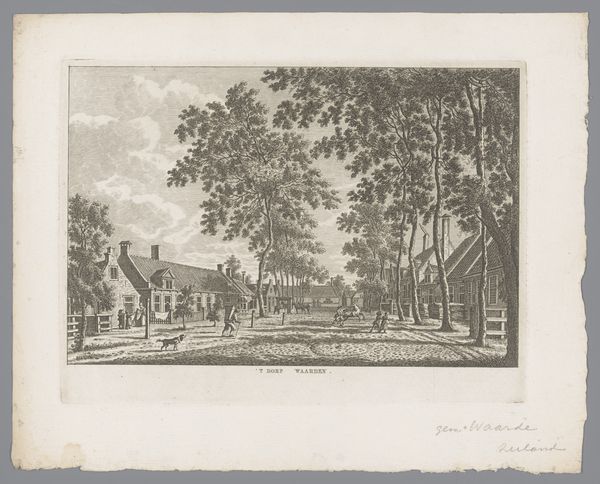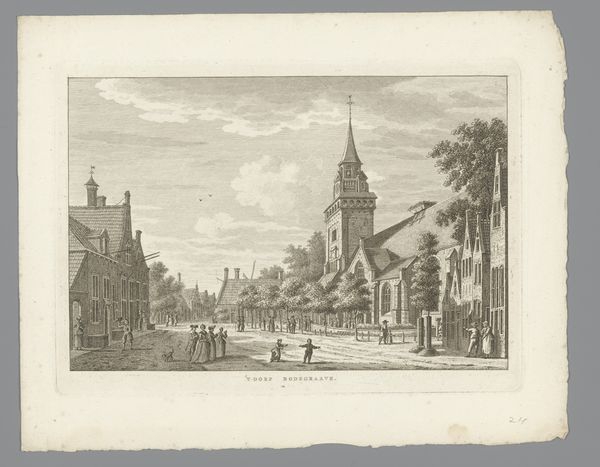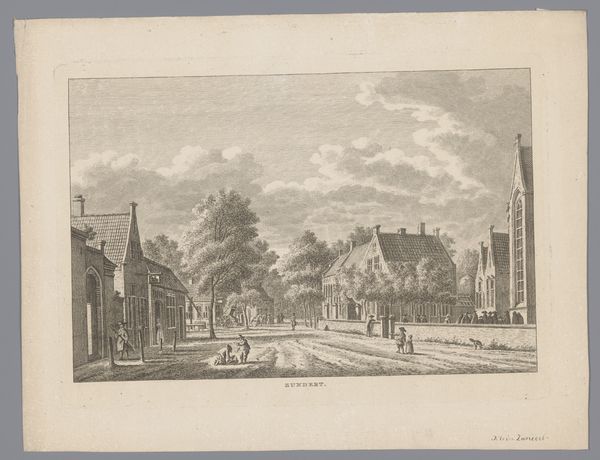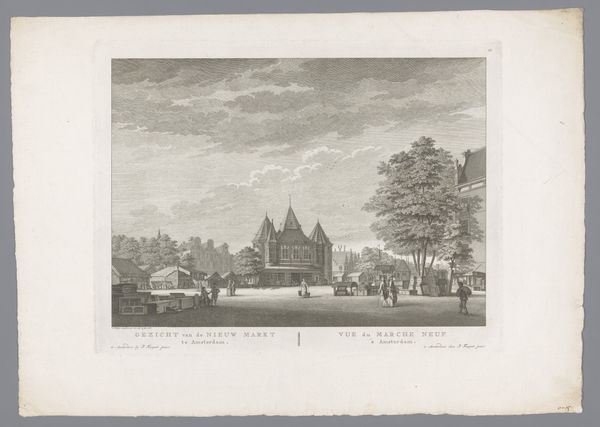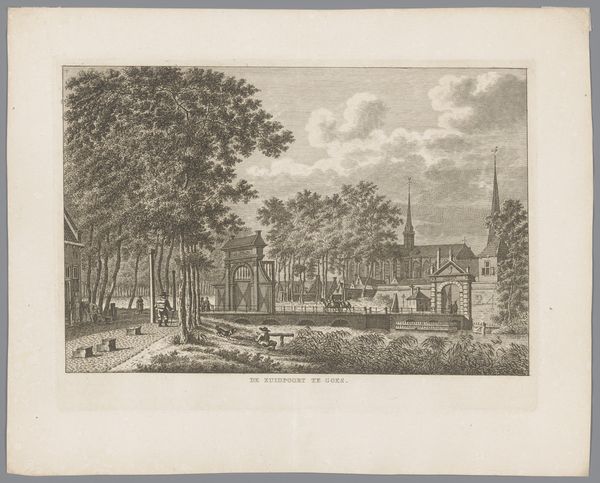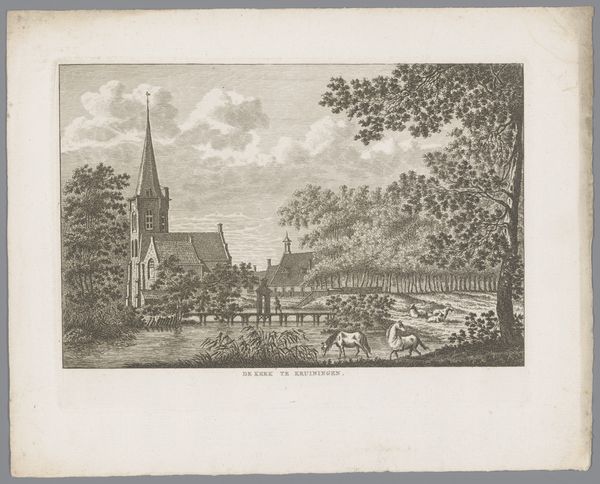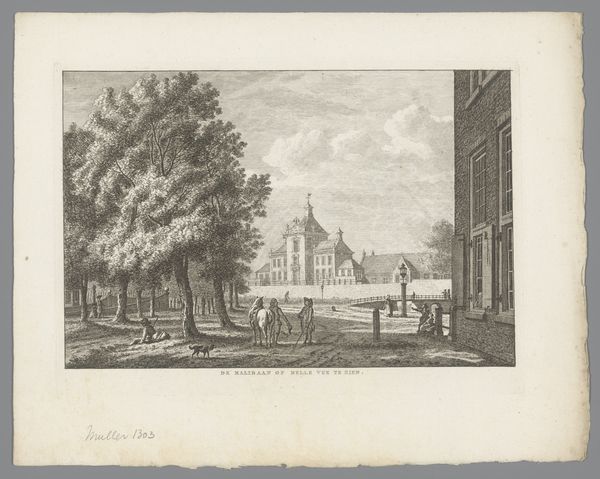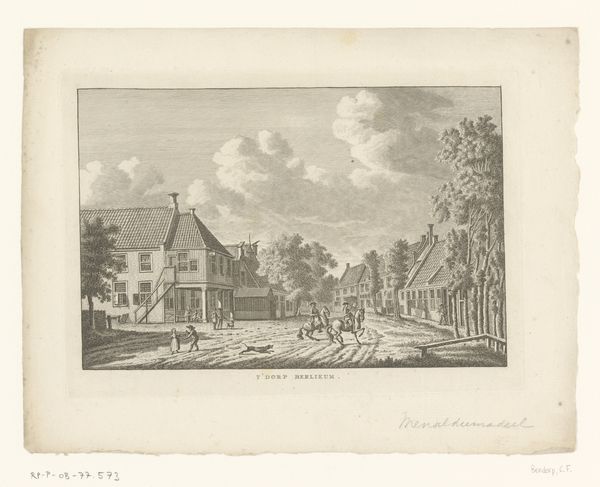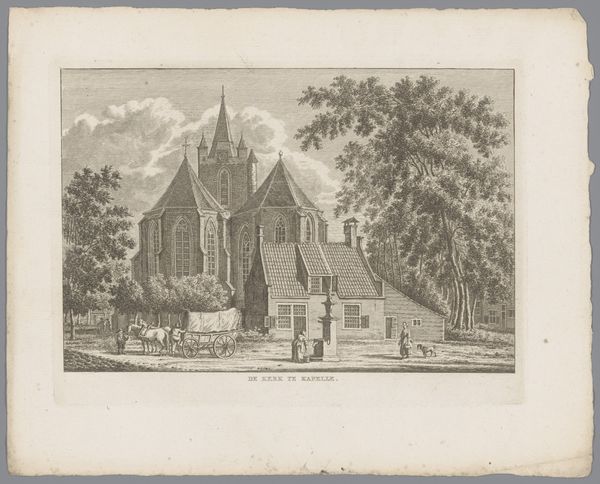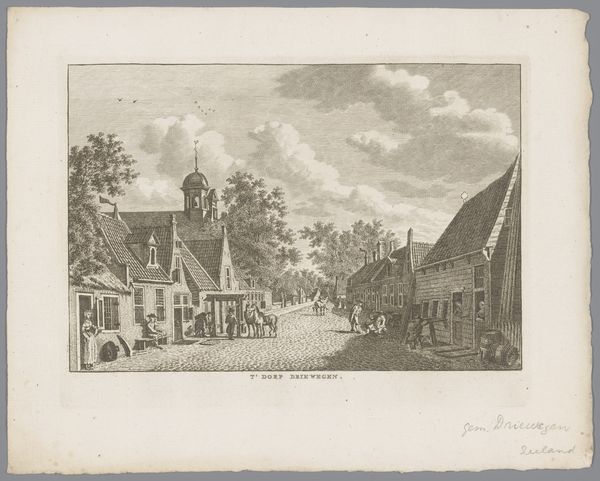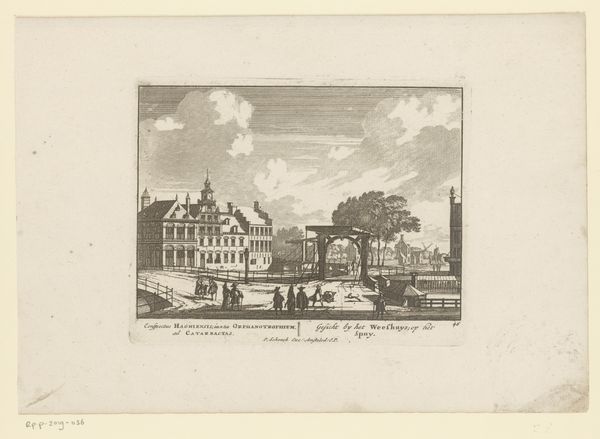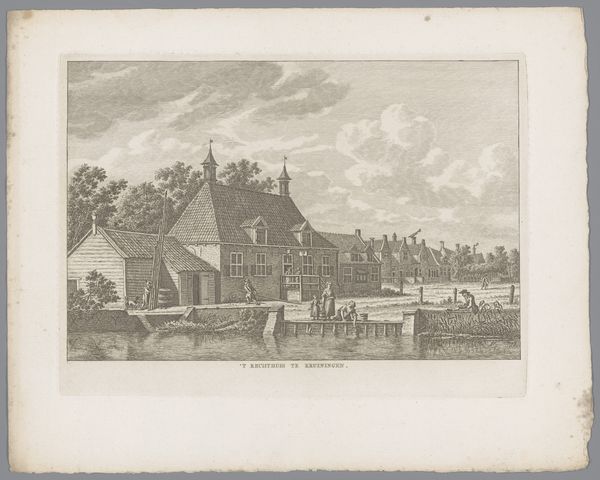
drawing, print, etching, paper, ink
#
drawing
#
neoclacissism
#
ink paper printed
# print
#
etching
#
landscape
#
paper
#
ink
#
watercolour illustration
#
genre-painting
#
academic-art
#
watercolor
Dimensions: height 174 mm, width 235 mm
Copyright: Rijks Museum: Open Domain
Editor: This is "Gezicht op het Schuttershof in Domburg," a print by Carel Frederik Bendorp, made between 1786 and 1792, currently housed in the Rijksmuseum. I’m struck by how orderly the composition is; it almost feels staged. What do you see in this piece, looking at it from an iconographic perspective? Curator: It’s interesting that you use the word "staged". This meticulous depiction resonates with the ideals of Neoclassicism, a movement steeped in cultural memory and order. Consider the symbolic weight of the Schuttershof, or Civic Guard building. It represented civic duty and local governance, a vital institution. Notice the figures populating the scene. Editor: Yes, there are quite a few. It's a bustling place! Curator: Precisely. Their poses and groupings-- do they echo classical allegories? It seems so deliberately constructed, from the figures in conversation to the lounging individuals, almost like archetypes being presented to us. Is the artist hinting at broader themes of society and leisure? Editor: That makes sense. So the order I noticed might reflect a broader societal push for…balance and structure? I hadn’t considered the figures themselves as symbolic elements before! Curator: Indeed. Every element serves as a carrier of meaning. This piece provides a window into the cultural and psychological landscape of the time, emphasizing a particular view of an ideal society, represented in the everyday. What do you think the dog is there for? Editor: Another figure? Or, a pet is about connection. Showing off their owners humanity. It could serve both roles and point to what is real, too. Thank you; that's so helpful to consider.
Comments
No comments
Be the first to comment and join the conversation on the ultimate creative platform.
